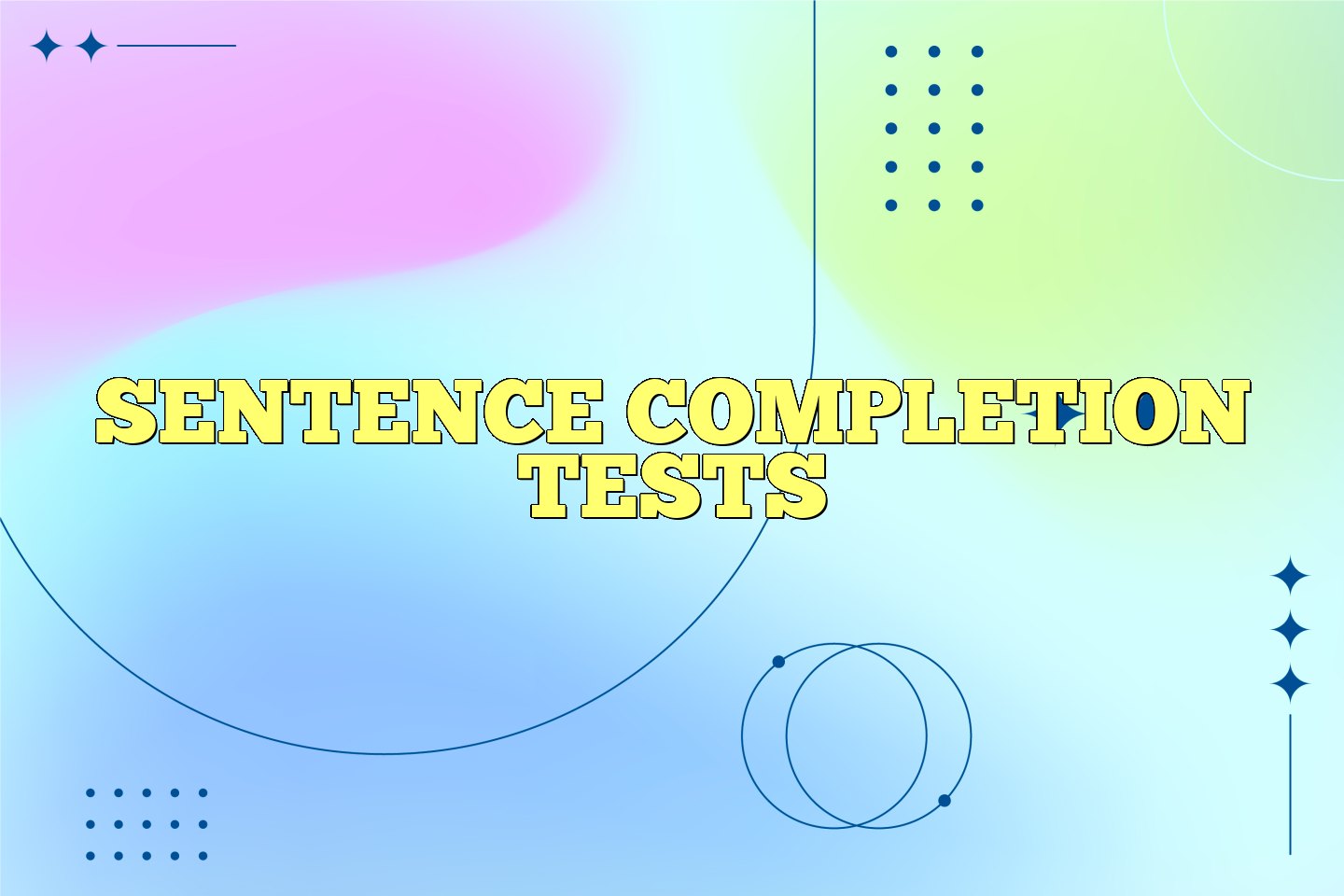Sentence Completion Tests are commonly used in psychological evaluations and assessments to measure various aspects of an individual’s cognitive abilities, emotional functioning, and personality traits. These tests involve presenting incomplete sentences to the test-taker, who is then required to fill in the blanks with their own words or thoughts. Each sentence is carefully designed to target specific components of the individual’s psychological makeup, such as problem-solving skills, self-awareness, and reasoning abilities. The purpose of using sentence completion tests is to gain a deeper understanding of an individual’s thought processes, emotions, and behaviors, which can aid in diagnosis, treatment planning, and overall psychological functioning. In this article, we will explore the specific components and purposes of sentence completion tests in further detail.

Sentence completion tests are a class of semi-structured projective techniques. Sentence completion tests typically provide respondents with beginnings of sentences, referred to as “stems,” and respondents then complete the sentences in ways that are meaningful to them. The responses are believed to provide indications of attitudes, beliefs, motivations, or other mental states. There is debate over whether or not sentence completion tests elicit responses from conscious thought rather than unconscious states. This debate would affect whether sentence completion tests can be strictly categorized as projective tests.
A sentence completion test form may be relatively short, such as those used to assess responses to advertisements, or much longer, such as those used to assess personality. A long sentence completion test is the Forer Sentence Completion Test, which has 100 stems. The tests are usually administered in booklet form where respondents complete the stems by writing words on paper.
The structures of sentence completion tests vary according to the length and relative generality and wording of the sentence stems. Structured tests have longer stems that lead respondents to more specific types of responses; less structured tests provide shorter stems, which produce a wider variety of responses.
History
Herman Von Ebbinghaus is generally credited with developing the first sentence completion test in 1897. Ebbinghaus’s sentence completion test was used as part of an intelligence test.
Carl Jung’s word association test may also have been a precursor to modern sentence completion tests.
In recent decades, sentence completion tests have increased in usage, in part because they are easy to develop and easy to administer. As of the 1980s, sentence completion tests were the seventh most widely used personality assessment instruments.
Another reason for the increased usage of sentence completion tests is because of their superiority to other measures in uncovering conflicted attitudes.
Some sentence completion tests were developed as a way to overcome the problems associated with thematic apperception measures of the same constructs.
Uses
The uses of sentence completion tests include personality analysis, clinical applications, attitude assessment, achievement motivation, and measurement of other constructs. They are used in several disciplines, including psychology, management, education, and marketing.
Sentence completion measures have also been incorporated into non-projective applications, such as intelligence tests, language comprehension, and language and cognitive development tests.
Examples of sentence completion tests
There are many sentence completion tests available for use by researchers. Some of the most widely used sentence completion tests include:
- Rotter Incomplete Sentence Blank (assesses personality traits; perhaps the most widely used of all sentence completion tests).
- Miner Sentence Completion Test (measures managerial motivations).
- Washington University Sentence Completion Test (measures ego development).
Data analysis, validity and reliability
The data collected from sentence completion tests can usually be analyzed either quantitatively or qualitatively.
Sentence completion tests usually include some formal coding procedure or manual. The validity of each sentence completion test must be determined independently and this depends on the instructions laid out in the scoring manual.
Compared to positivist instruments, such as Likert-type scales, sentence completion tests tend to have high face validity (i.e., the extent to which measurement items accurately reflect the concept being measured). This is to be expected, because in many cases the sentence stems name or refer to specific objects and the respondent is provides responses specifically focused on such objects.